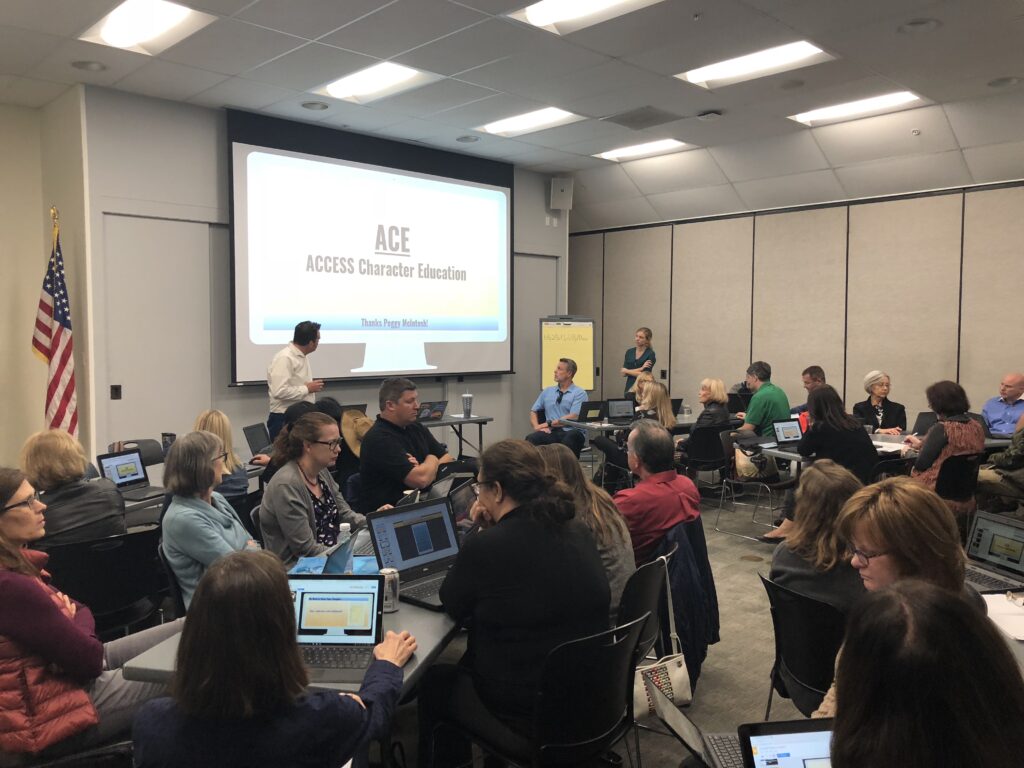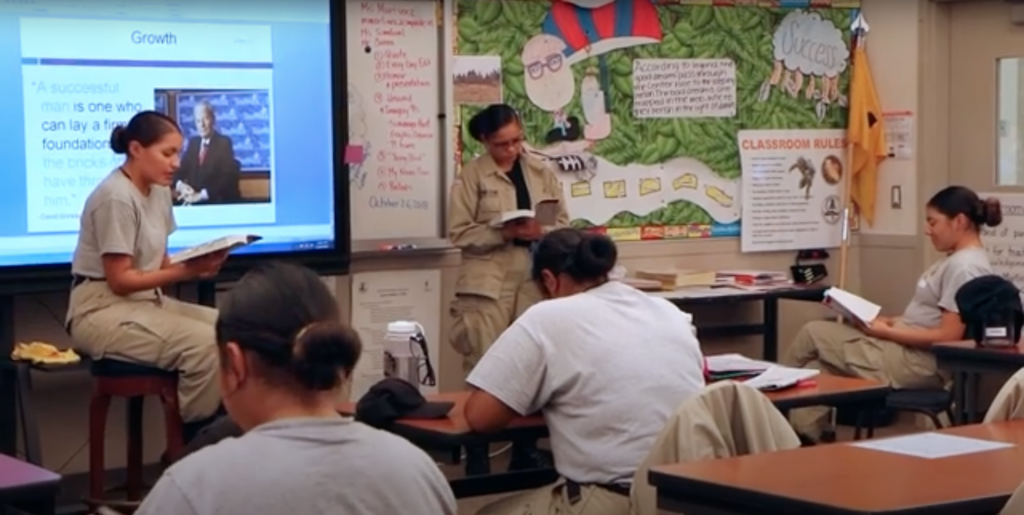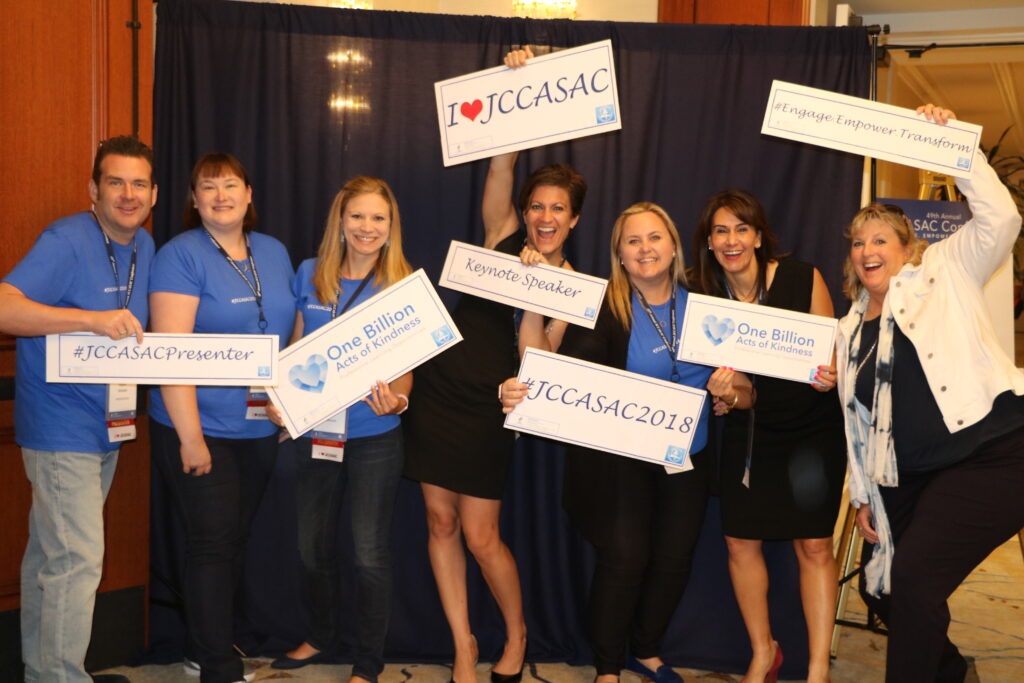
During a routine visit to Century Day School, Orange County Department of Education teacher Ryan Hinkle received a question from a high school student about when his class could begin the second, third and fourth installments of the “Unwind” series by Neal Shusterman. Hinkle and his alternative education colleagues chose the book as part of the English language arts curriculum.
When Hinkle encouraged the student to visit his local library to access the books, he responded with “I’ve never been to one before.” This led him to walk the high schooler through the book checkout process.
Returning to the campus the following week, Hinkle found out the student not only signed up for a library card but went on to complete the entire series in less than two weeks.
With the goal of increasing alternative education students’ engagement in school, four OCDE professionals teamed up to create lesson plans to motivate students to learn, help them read at grade level and develop the positive character traits that they can identify with through each novel.
In 2017, Hinkle and coordinator Jina Poirier began researching curriculum for the English Language Arts department in OCDE’s Alternative Education division, which is known as ACCESS. After conducting extensive research in hopes of finding educational materials that matched students’ current needs, they began to write their lesson plans focused on analyzing high-interest novels while incorporating the whole-child frameworks of Restorative Practices, Universal Design for Learning, Social and Emotional Learning, and Character Education.
The curriculum ultimately created by the ACCESS 2 Character Education acted as a template for teachers to reference while organizing instruction for teaching about novels. It also offered examples of how to integrate school district initiatives with choices for student work.
Expanding the OCDE English language arts curriculum committee, the two then recruited Brianne Parker, a teacher from OCDE’s Pacific Coast High School, to incorporate instruction tailored to English learner students. Education technology user support assistant Anne Wolff was also brought in to transform the curriculum into an accessible, user-friendly website for teachers and students.
“We designed this resource so that it’s adaptable to any classroom setting, whether independent study or day classes, so it’s extremely tangible for all areas of learning,” said Jina Poirier, team administrator and ACCESS coordinator of assessment, accountability and academic interventions. “Even though we use restorative practices in our model, teachers can switch the restorative practices for other behavioral plans that are utilized in their specific district.”
Five years after its launch, the free curriculum has been taught in alternative and general education classrooms from Springfield, Illinois to Ontario, Canada.
Increasing students’ desire to learn
Serving thousands of secondary students each year, the ACCESS program at OCDE provides a wide range of educational opportunities and support for its students, including many who face unique challenges and are at risk academically.
In classrooms implementing ACCESS 2 Character Education, junior high and high school students study a novel each month by following daily lesson plans, guided audiobook recordings from OCDE professionals, project “choice charts” with various activities, and technology tutorials produced by the team.

“Refugee” and “I Am Malala” are two of 14 novels chosen based on relevant themes and accolades received from credible organizations. With each book highlighting positive character attributes like dedication and empathy, the team hopes students can see those traits within themselves.
Through collaboration with OCDE coordinators, the team was able to universally design instruction with options for video-based discussions, recorded responses and classroom discussions — or “restorative circles” — with hopes of increasing students’ enthusiasm to read and complete their assignments.
In addition to meeting state standards, improving literacy levels and offering individualized prompts to present their comprehension, the curriculum allows students to show their creative sides through music, writing and creating their own art. For their final project, one student was inspired to design a shirt based on a book cover.
“It’s really nice to see that side of our students that sometimes we don’t always get to see in the classroom,” Parker said. “They stay hidden but it feels like it gives them the opportunity to really bring it out.”
Sharing character education with classrooms nationwide

After piloting their program and witnessing its impact in classrooms throughout ACCESS, the team began receiving offers to present nationwide and demonstrate how to integrate these frameworks into different teaching methods. Since kicking off their conference circuit, the curriculum has reached teachers and students in more than 30 states.
In 2018, the team met its fifth member, Dr. Katie Novak, after speaking at a conference hosted by the Juvenile Court, Community and Alternative School Administrators of California. The former assistant superintendent of schools in Massachusetts and renowned education consultant on Universal Design for Learning proposed the idea to co-write a book to share their work with a wider audience of educators and curriculum writers.
In “Universal Design for Learning in English Language Arts: Improving Literacy Instruction through Inclusive Practices,” they detail the process of planning and developing a reading-based curriculum and how it can be best used in classroom settings.
With their book slated to publish Nov. 14, Dr. Novak hopes they can assure teachers that student success is possible, learning outcomes can be altered and that lessons “don’t have to take away time from academics to meet the beautifully diverse needs of students.”
While documenting and presenting their work at conferences, the team plans to continually improve their curriculum while adding more books to their collection as students’ interests evolve.
“We always welcome the feedback, and we want to find out what’s working because our students are ever-changing,” Parker said. “We don’t have the same students that we had even seven years ago, so we want to be current with the most current trends.”
Administrators or teachers interested in the curriculum can learn more at the ACCESS 2 Character Education website. They can also contact the team for one-on-one curriculum tutorials.
